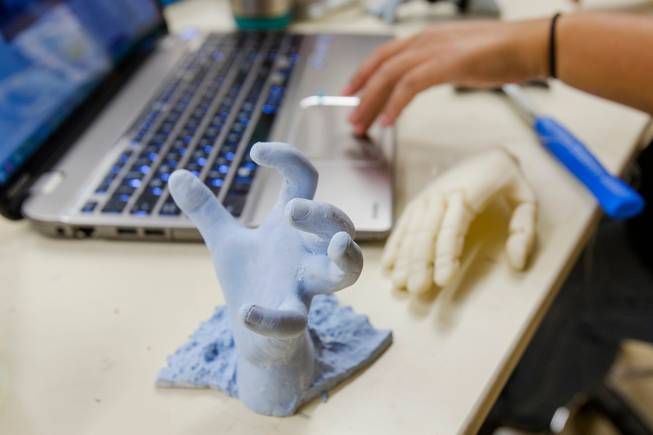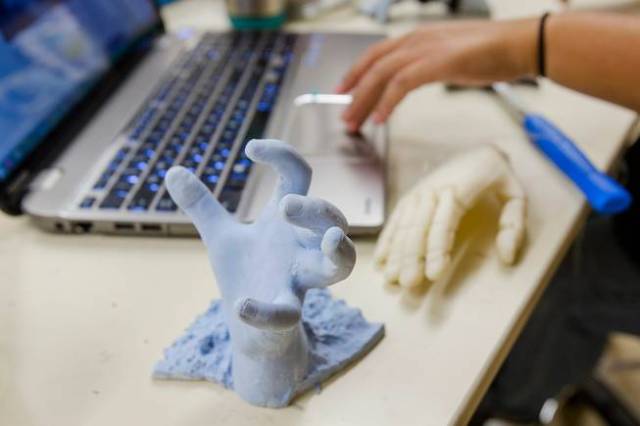BTN.com staff, October 16, 2014
Rutgers University student Katherine Lau knows a career in biomedical engineering has the potential to change lives. And this summer, she saw just what kind of impact she can have when she helped build a hand using 3D printing technology for a 4-year-old girl.
In a three-month summer internship, Lau delved into the field of prosthetics with a team of other students. She earned a $3,000 Rutgers University research stipend that she used to do the internship at the University of Nevada, Las Vegas, where she was able to serve as the project lead for developing a ?Robohand,? a reprinted mechanical hand using 3D technology.
Lau, a junior biomedical engineering major at Rutgers University who?s from Las Vegas, joined the research lab of Brendan O?Toole, a mechanical professor at UNLV. Along with O?Toole, she worked with another undergraduate and a high school student.
Yong Dawson, a Las Vegas resident, first contacted UNLV?s Howard R. Hughes College of Engineering earlier this year to ask if they?d be willing to develop an affordable plastic hand for her daughter using the university?s 3D printer.
Dawson?s daughter was born with Poland syndrome, a condition caused in the womb from inadequate blood circulation to the fetus that can lead to missing or abnormal muscles. The girl?s right hand is not fully developed and contains only a thumb and pinky, resembling a ?hang-loose? gesture.
A commercially created prosthetic could cost upwards of $10,000 - a high price to pay for a growing child who would need to be refitted every nine months or so. A 3D printed hand, however, would be a much more cost-effective option at around $300 or so. Three-dimensional technology is growing in the prosthetics field, and several designs are available in the public domain for 3D printed hands.
Lau and her team created a hand that contained mechanical linkages that would mimic the functions of a real hand. In using the ?Robohand? designs, which are publicly available, the team knew they would have to make significant revisions to accommodate the girl?s unique setup on her right hand as well as to get the correct fit for a child so small.
Over the summer months, the team worked on revamping the design to get it just right, taking measurements and plaster molds of the girl?s hand and using a computer software to tweak designs. After several weeks, they felt confident enough to press ?print.?
Lau said the toddler?s smiling face was inspirational as the team fitted her with a plastic arm that allowed her to grip onto a bike?s handlebars and hold onto a baseball for the very first time.
?Making a prosthetic for this girl really pulled at my heartstrings,? she said. ?The whole reason I wanted to get into biomedical engineering is to improve the lives of others. It was inspiring to see the impact of the work we did.?
The prosthetic hand straps onto the girl?s wrist and forearm. With the prosthetic, the girl is able to bend her hand forward and backward. When she bends her wrist, her fingers can tense up and close, allowing her to pick up a ball, open doors or grip onto a bike?s handlebars.
?She?s so excited about her new ?special hand,?? Lau says.
Though her work on this particular project has now ended, UNLV design students will continue to sharpen the design of the 4-year-old?s prosthetic.
As for Lau, she brought home a new passion and understanding for this growing part of the prosthetic field, and her work this summer inspired others at Rutgers. Lau and four of her fellow students formed a new club on campus devoted to studying 3D printing in prosthetics.
By Melissa Dittmann Tracey









